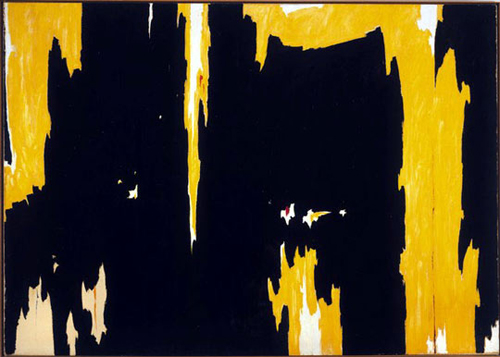Riffing off of yesterday’s post about fluidity. Again an image by Shinichi Maruyama, now compared with one by a 19th century Japanese artist, the master Utagawa Kuniyoshi.
Maruyama says that images such as this were traditionally made in Japan using animal glue, gold leaf and natural pigments. In this series he uses “all organically photographed ‘real’ pictures that have been recomposited together to produce the desired result.” He sees this series as an homage to ancient Japanese sensibilities.
Now look at how wonderfully he handles the spume, the water’s froth. Then see how Kuniyoshi has rendered the same thing.
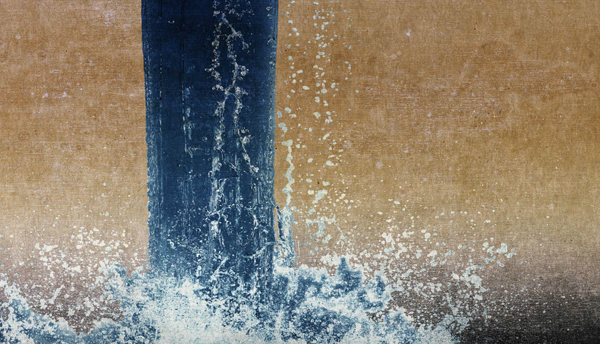
from Shinichi Maruyama’s Nihonga series (copyright the artist)
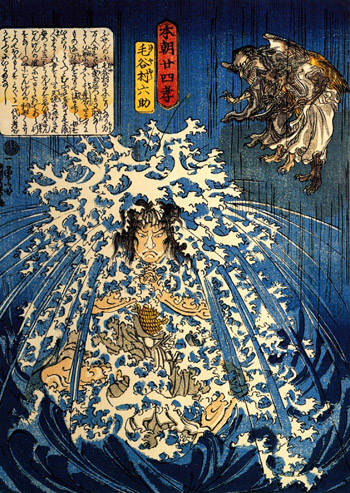
Keyamura Rokusuke under the Hikosan Gongen waterfall
by Utagawa Kuniyoshi (1797-1861) via Wikipedia Commons
What I want to point out here is Kuniyoshi’s less realistic treatment of the foam. In this blog I’ll use the term designwork when I want to refer to the misty boundary where naturalistic forms begin to stylize. I don’t mean abstraction. Maruyama’s work is an abstraction of sorts, not a photograph, not a studious landscape painting. But with designwork I mean for example where Kuniyoshi creates motifs of foaminess and then rings the changes on them, varying but repeating them around the figure. Those wild white spitting shapes are designwork.
Something wild, chaotic, natural is visually tamed. Rules are imposed but not the rules of nature — you toss water up, gravity pulls it down. These are aesthetic rules, rules that simplify and order. Ideas of geometry get stronger — box, triangle, circle. Individual nuance softens as regularity emerges. It’s not just abstraction, it’s design.
With a snip from Kuniyoshi’s foam we can follow the idea of designwork far enough to arrive in the world of pattern. In me, pattern is the antithesis of pulsing life and motion. Pattern traps motion, requires it to repeat. And repeat.
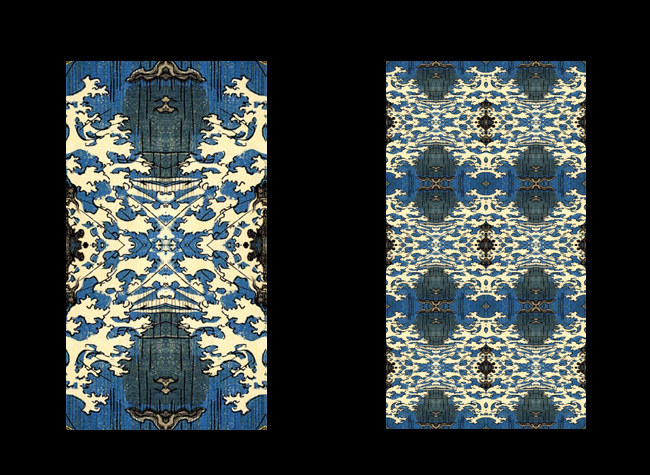
Doomed to reiterate and not stray away from the same again, again.
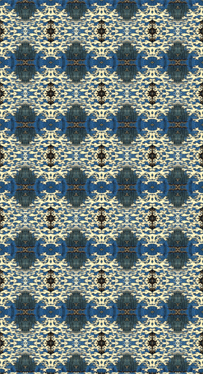
Here’s different example. Start with a no-kidding realistic painter like the great Louis Agassiz Fuertes. His study of a kingfisher seeks to record its truth. Below this we see a lively kingfisher made by Thomas Poulsom.* His medium is Legos, which pretty much guarantees the form is simplified and that elements are repeated.
Visual rhythm is in us as indelibly as the musical kind.

Louis Agassiz Fuertes’ Belted Kingfisher via Wikimedia Commons.
Thomas Poulsom’s Kingsley Kingfisher via his Flickr page.
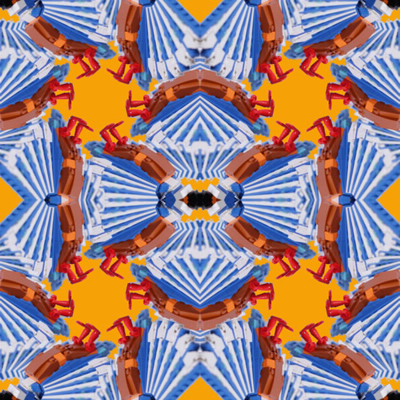
all patterns by Sloan Nota
When you sing about patterns the tune is Row row row your boat…
* Poulsom is embarked on a British Birds Series in Legos.

